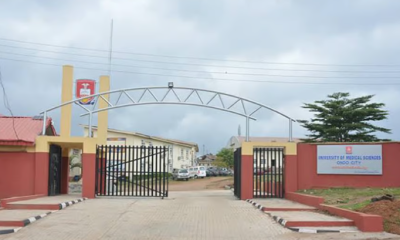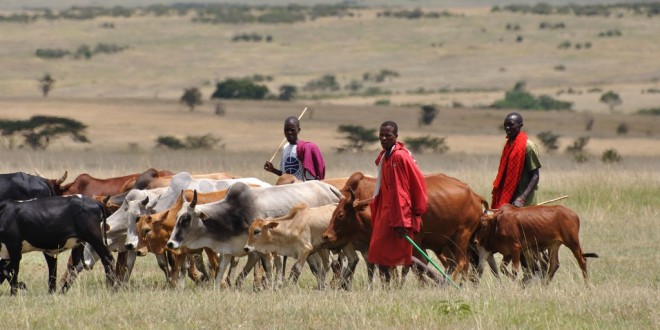The upsurge of violence, killings, destruction of farmlands, kidnapping attributed to Fulani herdsmen in southern Nigeria have continued to be of immense perturbation to stakeholders in the country. This is, particularly, as the surge of Fulani herdsmen into the interior of southern Nigeria and the associated crime wave and threats of dispossession of ancestral lands, are beginning to generate tension of inter-ethnic warfare.
The Nigerian government had earlier initiated policy on developing ranching in the 36 states of the federation which precipitated wide resistance and suspicion of Islamic territorial expansion and Fulani invasion of Nigeria, among others. The strong opposition to ranching in states which main occupation is not animal husbandry made the federal government drop the idea. The presidency at a point threatened Nigerians to choose between giving up their land to the Fulani herdsmen for ranching or face the risk of being killed.
Meanwhile, the rising kidnapping and destruction of farmlands in the south have compelled several counteractions by both state actors and non-state actors. Some states have established security structures within their jurisdictions for crime control.
The Nigerian government appears overwhelmed by the crime wave in the country, compelling citizens, and groups to consider self-help to protect their lives. This is in addition to emerging regional security structures like Amotekum, South East Security Network, etc., for self defence.
The Fulani herdsmen violence has made some stakeholders look at the demography of Nigeria, leading to the statistics of more landmass in northern Nigeria than the south. The landmass, many argued, is more than enough for cattle grazing.
Statistics of landmass in each of the 36 states of the federation and the Federal Capital Territory (FCT) shows that Niger State has the largest land space of 76,363km², followed by Borno State which has 70,898km². others are as follows: Taraba State 54,473km², Kaduna State 46,053km², Bauchi State 45,837km², Yobe State 45,502km², Zamfara State 39,762km², Adamawa State 36,917km², Kwara State 36,825km,
Kebbi State 36,800km², Benue State 34,059km², Plateau State 30,913km², Kogi State 29,833km², Oyo State 28,454km², Nasarawa State 27,117km²,
Sokoto State 25,973km², Katsina State 24,192km², Jigawa State 23,154km²,
Cross River State 20,156km², Kano State 20,131km², Gombe State 18,768km², Edo State 17,802km², Delta State 17,698km², Ogun State 16,762km²,
Ondo State 15,500km², Rivers State 11,077km², Bayelsa State 10,773km², Osun State 9,251km², Federal Capital Territory 7,315Kkm², Enugu State 7,161km², Akwa Ibom State 7,081km², Ekiti State 6,353km², Abia State 6,320km², Ebonyi State 5,670km², Imo State 5,530km², Anambra State 4,844km² and Lagos State 3,345km².
Analytic shows that Kogi State with 29,833km² landmass is bigger than the five states in the southeast which comprises Anambra, Enugu, Abia, Imo and Ebonyi which have a total of 29,525km².
Niger State with 76,363km² is larger in size than five states in the south west which comprise Ogun, Oyo, Osun, Ondo and Ekiti with the size of 76,320km², excluding Lagos which is 3,345km².
Apparently, what the Fulani herdsmen are looking for in southern Nigeria exists in abundance in northern Nigeria. Northern leaders, essentially, northern governors have the duty to develop the landmass in their territory for animal husbandry.
While the Fulani herdsmen have been making life miserable for citizens in southern Nigeria under the guise of pursuing economic interest, the entire stock of the herdsmen does not qualify Nigeria to be among the top 10 global cattle business countries. The Fulani herdsmen cattle business is insignificant in global cattle business records yet, they are causing more discomfort and threat to war than countries where cattle business contribute significantly to the GDP of their economy.
Statistics of the top 10 countries in global cattle business shows that India leads with 303 million cattle, then Brazil 226 million, China 100 million, USA 93 million, EU 89 million, Argentina 53 million, Australia 27 million, Russia 18 million, Mexico 16 million and Turkey 14 million. In none of these countries are herdsmen destroying the farmlands and economic fortunes of other citizens, nor threatening war and invasion.

 Business7 days ago
Business7 days ago
 Inspirational7 days ago
Inspirational7 days ago
 Politics6 days ago
Politics6 days ago
 Featured6 days ago
Featured6 days ago
 Business6 days ago
Business6 days ago
 Business1 week ago
Business1 week ago
 Latest6 days ago
Latest6 days ago
 Education6 days ago
Education6 days ago



